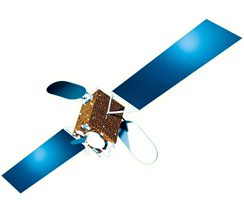The Chinese telecommunications satellite Chinasat-6A (aka Sinosat 6) is likely to be declared a total loss for insurance purposes after the satellite failed to recover from the attitude control issues it has been suffering since early December. The satellite, which was built by CAST using its DFH-4 bus design, and which is owned by China Satellite Communications (China Satcom), had an anomaly involving its attitude control/ability to point related to thruster control on 9 December 2021.This resulted in its customers being transferred to a sister spacecraft in Geostationary Earth Orbit (GEO) and a claim for total loss being made to its insurers.
If this claim is accepted, the loss value likely to be paid out is expected to be only US$20 million as its book value was low given its age. The Chinasat-6A spacecraft was launched in September 2010 on a Long March 3B rocket and was designed to operate for a minimum of 15 years.
The satellite has previously had attitude control/propulsion system issues. According to the Seradata SpaceTrak launch and satellite database, soon after its launch Chinasat 6A suffered a leak in its helium pressurisation system which caused an insurance loss of US$23.9m (12 per cent).








